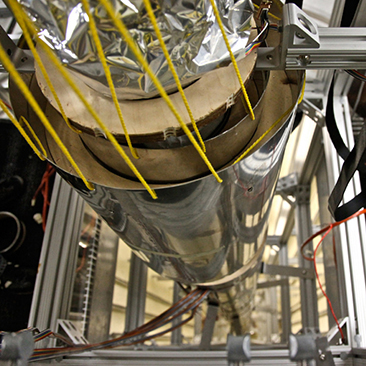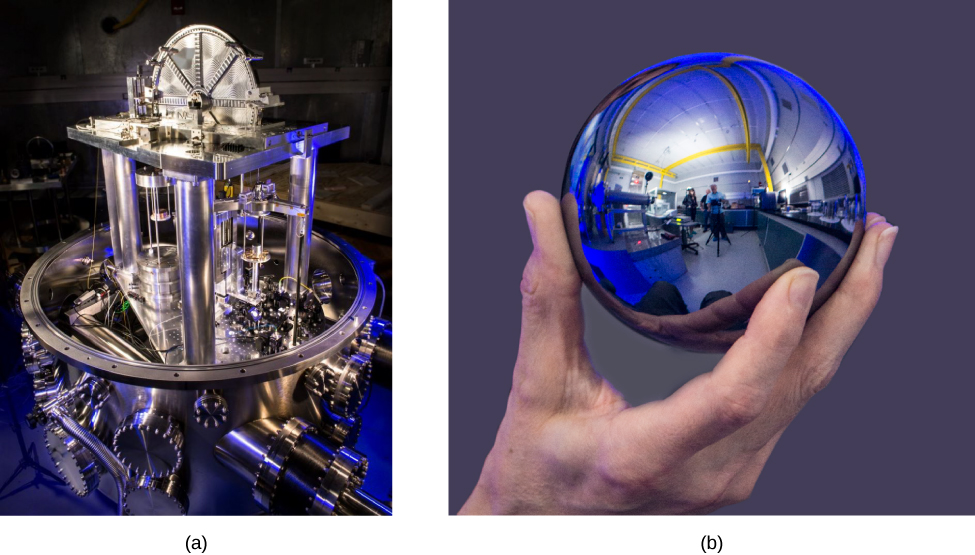| << Chapter < Page | Chapter >> Page > |

The SI unit for length is the meter (abbreviated m); its definition has also changed over time to become more precise. The meter was first defined in 1791 as 1/10,000,000 of the distance from the equator to the North Pole. This measurement was improved in 1889 by redefining the meter to be the distance between two engraved lines on a platinum–iridium bar now kept near Paris. By 1960, it had become possible to define the meter even more accurately in terms of the wavelength of light, so it was again redefined as 1,650,763.73 wavelengths of orange light emitted by krypton atoms. In 1983, the meter was given its current definition (in part for greater accuracy) as the distance light travels in a vacuum in 1/299,792,458 of a second ( [link] ). This change came after knowing the speed of light to be exactly 299,792,458 m/s. The length of the meter will change if the speed of light is someday measured with greater accuracy.

The SI unit for mass is the kilogram (abbreviated kg); it is defined to be the mass of a platinum–iridium cylinder kept with the old meter standard at the International Bureau of Weights and Measures near Paris. Exact replicas of the standard kilogram are also kept at the U.S. National Institute of Standards and Technology (NIST), located in Gaithersburg, Maryland, outside of Washington, DC, and at other locations around the world. Scientists at NIST are currently investigating two complementary methods of redefining the kilogram (see [link] ). The determination of all other masses can be traced ultimately to a comparison with the standard mass.
There is currently an effort to redefine the SI unit of mass in terms of more fundamental processes by 2018. You can explore the history of mass standards and the contenders in the quest to devise a new one at the website of the Physical Measurement Laboratory.

SI units are part of the metric system , which is convenient for scientific and engineering calculations because the units are categorized by factors of 10. [link] lists the metric prefixes and symbols used to denote various factors of 10 in SI units. For example, a centimeter is one-hundredth of a meter (in symbols, 1 cm = 10 –2 m) and a kilometer is a thousand meters (1 km = 10 3 m). Similarly, a megagram is a million grams (1 Mg = 10 6 g), a nanosecond is a billionth of a second (1 ns = 10 –9 s), and a terameter is a trillion meters (1 Tm = 10 12 m).

Notification Switch
Would you like to follow the 'University physics volume 1' conversation and receive update notifications?